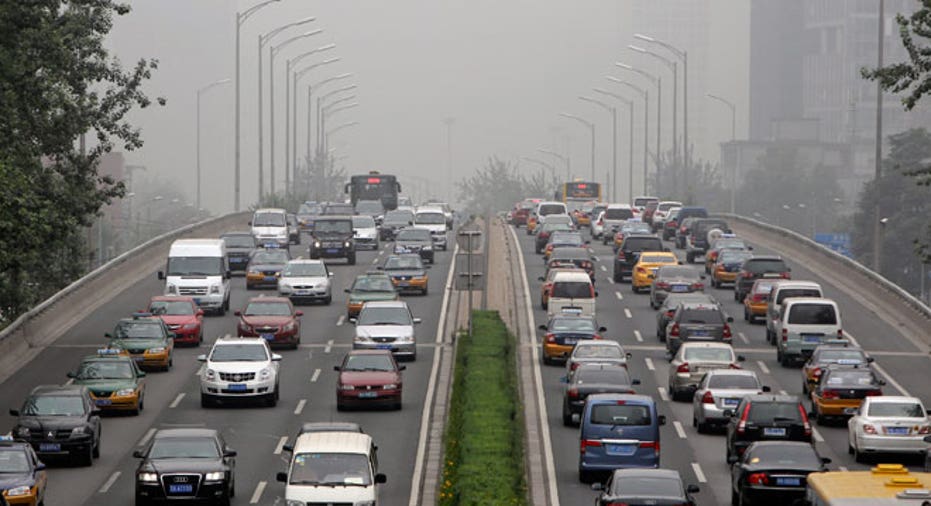The One State Where Car Insurance Got Cheaper

If you were alive and consuming in 1989, you probably are paying much more for everything today than you were then. The average new car -- only the fancy ones had airbags and CD players -- cost $14,371; last month, the average was $30,804, says TrueCar.com.
But some things have gotten cheaper. Air fares, for example. Computers. And here's a surprising one: car insurance.
An analysis released Friday from the nonprofit Consumer Federation of America (CFA) finds the typical household spent 43 percent more on car insurance in 2010 than it did in 1989. That's well below the 88 percent increase in the Consumer Price Index, the government's gauge of inflation, over the same period.
But the watchdog didn't crunch the numbers to point out what a great deal everyone's getting on car insurance these days.
Instead, CFA is highlighting the changes made in one state where insurance expenditures fell in absolute terms, not even accounting for inflation. Drivers in California paid an average of $746 for car insurance in 2010 -- $2 less than they paid in 1989.
California's car insurance time warp
“No other state has put in place the kind of strong oversight that California voters created in 1988, and no other state has seen auto insurance prices decline,” says J. Robert Hunter, spokesperson for the CFA.
California voters that year approved a sweeping proposal that gave state regulators the power to approve rate changes before they are implemented -- in many states that order is reversed --and gave consumers a window into each company's rate-setting decisions, limiting the factors that could be considered and providing a specific discount for good drivers.
Over the same period, insurance costs in seven states more than kept up with inflation. Kentucky, Louisiana, Montana, Nebraska, South Dakota, West Virginia and Wyoming saw increases of 90 percent or more since 1989. Only California, Hawaii, New Hampshire and New Jersey saw insurance spending rise less than 25 percent. (The figures include spending on all types and amounts of auto insurance, from minimal liability policies on old cars all the way up to Ferraris with millions in protection.)
Insurance industry groups strongly disagree with the CFA's contention that the 1988 law is still working wonders.
The Association of California Insurance Companies points out to Insurance Journal a host of other factors, such as safer cars, fewer drunken drivers, limits on lawsuits and better controls on fraud. Insurance Institute for Highway Safety President Robert Hartwig told Bloomberg News that higher gas taxes in California have led drivers there to choose smaller cars.
What California drivers see
A consumer shopping for car insurance in California today might not be aware of the behind-the-scenes politics that affect rates, but they certainly encounter practices that make California unique:
- Credit can't be used as a rating factor. Only two other states -- Massachusetts and Hawaii -- also forbid use of credit information. (See “The double-whammy of bad credit.”)
- A state-mandated Good Driver Discount gives a 20 percent break on rates for experienced drivers with one point or less on their records.
- ZIP code is not a primary factor in calculating rates, as it is in virtually every other state. (See “How your ZIP code drives up your car insurance.”)
- The state has an exceptionally low requirement for liability insurance, just $15,000 for bodily injury and $5,000 for property damage.
- Low-income drivers with good records can go even lower on liability, buying policies for $350 a year or less.
Here is the change, by state, in insurance expenditures from 1989 to 2010. The data come from the National Association of Insurance Commissioners.
Alabama 52.8%
Alaska 58.9%
Arizona 38.3%
Arkansas 81.6%
California -0.3%
Colorado 41.7%
Connecticut 30.4%
Delaware 79.6%
District of Columbia 42.3%
Florida 69.9%
Georgia 41.1%
Hawaii 13.7%
Idaho 57.3%
Illinois 45.0%
Indiana 46.6%
Iowa 73.5%
Kansas 83.5%
Kentucky 92.3%
Louisiana 96.1%
Maine 33.9%
Maryland 46.7%
Massachusetts 22.3%
Michigan 69.7%
Minnesota 50.5%
Mississippi 69.0%
Missouri 57.7%
Montana 95.4%
Nebraska 108.1%
Nevada 58.7%
New Hampshire 15.9%
New Jersey 17.7%
New Mexico 58.6%
New York 62.2%
North Carolina 54.6%
North Dakota 86.8%
Ohio 38.4%
Oklahoma 75.4%
Oregon 55.4%
Pennsylvania 25.7%
Rhode Island 35.7%
South Carolina 49.3%
South Dakota 92.0%
Tennessee 51.5%
Texas 70.5%
Utah 86.1%
Vermont 48.8%
Virginia 53.8%
Washington 66.2%
West Virginia 89.9%
Wisconsin 56.3%
Wyoming 95.1%
National Average 43.3%
The original article can be found at CarInsurance.com:Did your car insurance get cheaper?